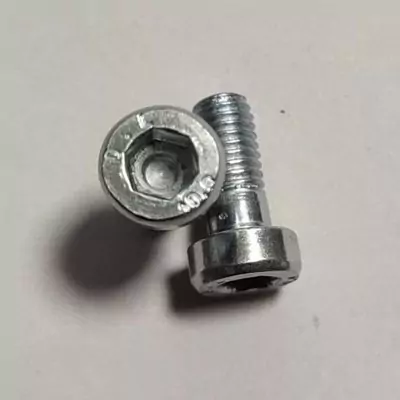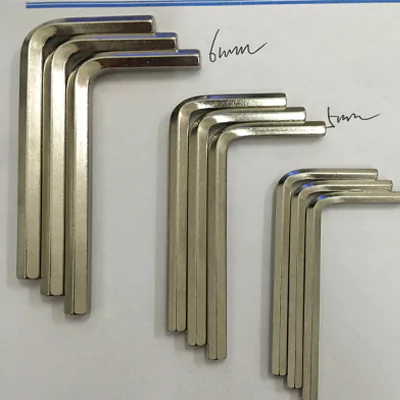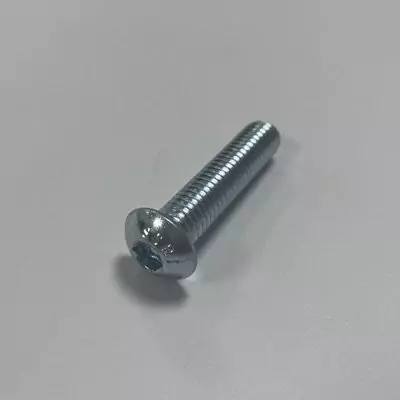caTEGORIES
Tags
Installation of Socket Head Cap Screws in Machinery: A Step-by-Step Guide

Posted: October 17, 2024
Categories: News
Socket Head Cap Screws are essential components in machinery, providing secure fastening and optimal performance. To ensure proper installation, it is crucial to follow a step-by-step guide.
What Are Socket Head Cap Screws?
Socket head cap screws are fasteners known for their head and hexagon drive that enables torque application using a socket tool. They are widely utilized across industries, for their robustness and longevity. The compact design of socket head cap screws makes them ideal for machinery and equipment assembly in spaces. Their larger bearing surface aids in load distribution and prevents loosening due to vibrations making them crucial, for maintaining the strength of connections.
Key Features and Benefits
Socket head cap screws are known for their lightweight design that can bear loads without adding unnecessary bulkiness. Furthermore, the hexagon-shaped drive inside allows for the use of tools that offer improved leverage when installing them. They are available in materials such as steel, alloy steel, and carbon steel to cater to various environments and weight requirements. Socket head cap screws offer versatility as they can be utilized in a range of applications spanning from automotive to aerospace industries to build strong assemblies.
Types of Socket Head Cap Screws
There are various types of Socket Head Cap Screws available, each designed for specific applications. Some common types include standard socket head cap screws, low head socket head cap screws, button head socket head cap screws, and flat head socket head cap screws. These screws differ in their head shape, length, and thread size, allowing for versatility and customization in machinery installations.
How to Prepare for the Installation of Socket Head Cap Screws?
Before you start putting in socket head cap screws make sure you have all the tools and equipment you need to go! Being prepared will make it easier to install them smoothly and ensure they work well in the places they’re supposed to be used.
Necessary Tools and Equipment
Essential Tools
When you’re putting in socket head cap screws make sure you have a socket wrench that matches the size of the socket you’re using. It’s an idea to use a torque wrench to apply the amount of force and avoid causing any damage, to the screw or the surrounding area. Sometimes, for screws, it’s handy to use a hex key (also known as an Allen wrench) as it can help you reach into spaces more easily.

Optional Equipment
Different additional tools might help with the installation process based on the installation conditions at hand. For instance, using thread-locking compounds can help increase friction in the threads and prevent them from loosening due to vibrations. Lubricants are also useful for making the installation smoother and ensuring that the tension is evenly distributed when tightening. It is also recommended to wear safety goggles and gloves to maintain safety while carrying out the installation process.
Pre-installation Checklist
Before installing the socket head cap screws you should go through a installation checklist to make sure all components are prepared and in good condition. This checklist helps detect any problems taking care of them so that the installation process can run smoothly.
Inspection Process
Start by checking the socket head cap screws for any indications of harm like bending or corrosion. Examine the installation area to validate the positioning of openings and guarantee there are no dirt or impurities that could disrupt the setup. Its also recommended to confirm that the appropriate size and kind of screw are being utilized as, per the project requirements.
Safety Precautions
When working with socket head cap screws and tools it’s essential to prioritize safety measures. Putting on eyewear can help prevent any injuries caused by flying debris during the installation process. Additionally using gloves can enhance grip. Reduce the likelihood of injury when dealing with screws or tools.
Step-by-Step Guide to Install Socket Head Cap Screws
For a secure installation of socket head cap screws, in your machinery, it’s important to follow a guide step, by step to make sure each screw is properly fastened in place.
Initial Alignment and Positioning
Proper Alignment
To begin the installation make sure to align the parts that need to be connected as improper alignment can result in threading issues or insufficient fastening strength. Use guides or tools for alignment if needed to ensure the components are in the position before you insert the screw.
Positioning Tips
When placing the socket head cap screws in position correctly remember to align the screw head with the surface of the component for a neat assembly look and feel. Remember when using screws make sure they do not exceed the specified boundaries to prevent any harm to components.

Thread Engagement Process
Engaging Threads Appropriately
After placing the screw in position gently insert it into the threaded hole ensuring that the threads fit smoothly without any force. Begin turning the screw by hand at first letting the threads align naturally.
Avoid Cross-threading
During the interactions phase it’s important to be careful not to cross thread since that could weaken the strength of the joint being fastened. If you encounter any resistance loosen the screw, adjust its position to ensure the threads are aligned correctly before continuing.
Final Tightening Procedure
Torque Specifications
Once the screw is securely in place the next task is to tighten it. Use a torque wrench to apply the recommended torque levels specified in the machinery design guidelines. Adhering to the manufacturer’s instructions will help prevent tightening or leaving the screw loose.
Ensuring Secure Fit
After you’ve tightened all the screws in place and checked them visually and physically to make sure they’re secure it might be an idea to double-check the tightness again after a bit of use just to be sure they don’t need any adjustments.
Post-installation Practices
Once you have installed the socket head cap screws securely in place it’s important to follow up with installation steps to maintain the durability and effectiveness of both the fasteners and the equipment. This section highlights the significance of verifying the installation quality.
Double-checking Installation Quality
After you’ve put in the socket head cap screws and tightened them properly in place, it’s essential to conduct a check to make sure everything is secure and working as it should for each use case.
Visual Inspections
During the check of the setup by inspectors, it is important to look out for signs of screws being misaligned as this could cause strain on them. Inspectors must ensure that the heads of the screws are flush against the surface without any gaps or misalignment. They should also inspect for any damage like scratches or dents on the screws to avoid problems, in the future.
During inspections at the installation site, it’s important to take note of the surrounding environment well It’s crucial to check for any potential contaminants like oil or debris. This helps preserve the connection’s strength. Performing a detailed visual check right after installation gives assurance that the assembly is prepared for operational use.
Mechanical Testing
To ensure the installation’s effectiveness goes beyond looking at it mechanical tests can also be used for additional verification purposes. One method involves putting the socket head cap screws that have been installed through stress tests to see how they perform under pressure. These tests are valuable,for spotting any flaws in the installation before they escalate into problems during operation.
The process of conducting tests involves either testing tension or measuring torque to verify the stability of screws under anticipated loads effectively. Keeping records of these trials can offer information for use and highlight the strength of the construction, to interested parties.
Maintenance Tips for Longevity
To prolong the lifespan of socket head cap screws and ensure they operate effectively over time it is advisable to follow a maintenance schedule. This approach does not boost the longevity of the screws. Also improves the overall performance of the machinery.
Regular Inspections
Creating an inspection schedule is crucial for avoiding breakdowns by checking torque settings to catch any loosening caused by vibrations or temperature changes early on is vital—especially in places with varying temperatures or frequent use where parts may shift over time.
During inspections also check for any signs of corrosion. Wear appears in the socket head cap screws since it may impact how well they work efficiently. If you notice any inconsistencies make sure to act to resolve them by either tightening screws again or replacing those that are damaged to prevent any disruptions, in functionality.
Cleaning and Upkeep
Ensuring that the socket head cap screws stay clean is crucial for their durability in the run.Dust build-up or exposure to substances can impact the screw’s performance. Result in early malfunction. It’s essential to follow a cleaning routine using cleaning agents and brushes to remove any dirt without causing harm to the screws.
During maintenance tasks and checks for machines and their parts connections, it’s beneficial to apply a thin layer of lubricants onto the threads as this can maintain the strength of the linkages intact. The use of lubricant can minimize resistance during setups or modifications making it simpler and safer to fasten. Proper cleaning and maintenance are routines that aid, in maintaining the well-being of machine components and their fasteners.
About Qewitco
The reputation of Qewitco in the fastening market is solid and trustworthy as we focus on producing top-notch socket head cap screws with quality control measures, for consistent performance results. Understanding the requirements of applications drives Qewitco to provide a diverse selection of materials sizes and coatings to cater to the varied demands of their customers.
Qewitco’ deep knowledge, in this industry enables us to serve sectors like automotive and aerospace by supplying the fasteners needed for constructing applications. Your dedication to customer care guarantees that customers not only get products but also benefit from advice, on installing and maintaining them effectively. This support promotes utilization. Prolongs the lifespan of the socket head cap screws.
In the realm of machinery assembly and upkeep sector collaboration stands at the core, Qewitco’ mission to support engineers and technicians with the expertise and equipment for installations. Our wealth of resources and industry know-how to place us as a partner for professionals seeking top-notch fastening solutions in their work environments.
Qewitco is committed to pushing forward the standards and practices related to socket head cap screws by providing support and introducing products to uphold quality and reliability as key priorities, in the industry.


